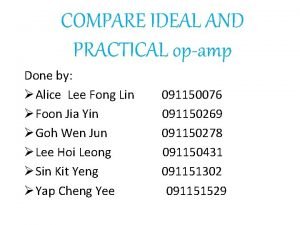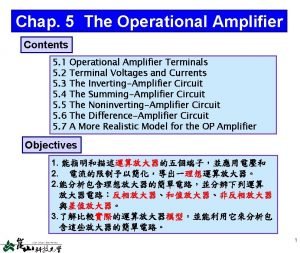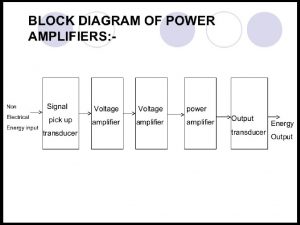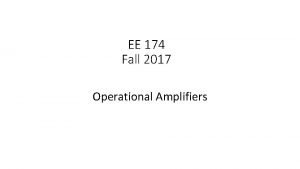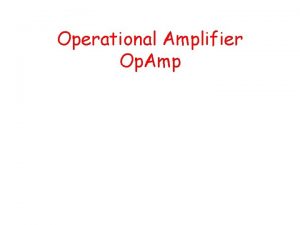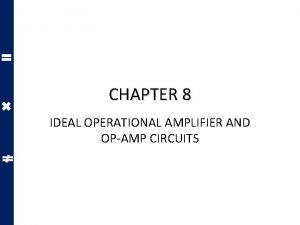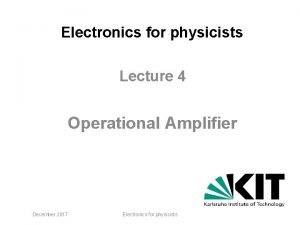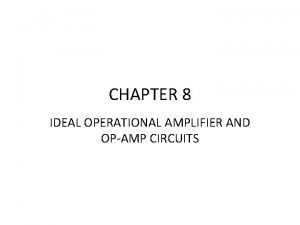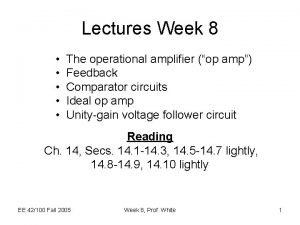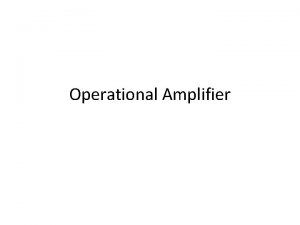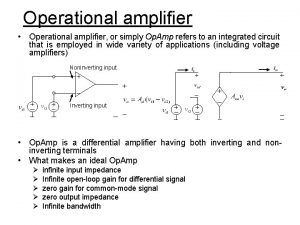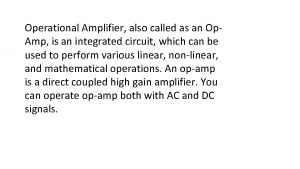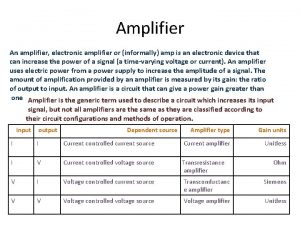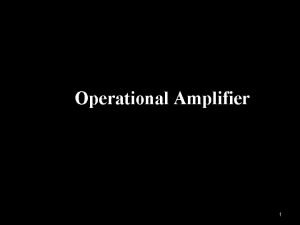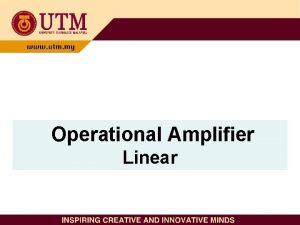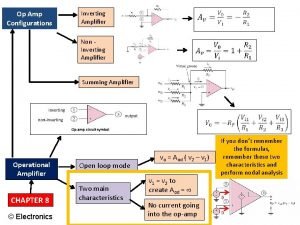Operational Amplifier also called as an Op Amp











- Slides: 11


• Operational Amplifier, also called as an Op. Amp, is an integrated circuit, which can be used to perform various linear, non-linear, and mathematical operations. • An op-amp is a direct coupled high gain amplifier. • You can operate op-amp both with AC and DC signals.

Construction of Operational Amplifier • An op-amp consists of differential amplifier(s), a level translator and an output stage. • A differential amplifier is present at the input stage of an op-amp and hence an op-amp consists of two input terminals. • One of those terminals is called as the inverting terminal and the other one is called as the noninverting terminal. • The terminals are named based on the phase relationship between their respective inputs and outputs.

Characteristics of Operational Amplifier • The important characteristics or parameters of an operational amplifier are as follows − • Open loop voltage gain • Output offset voltage • Common Mode Rejection Ratio • Slew Rate

Open loop voltage gain • The open loop voltage gain of an op-amp is its differential gain without any feedback path. • Mathematically, the open loop voltage gain of an op-amp is represented as −

Output offset voltage • The voltage present at the output of an opamp when its differential input voltage is zero is called as output offset voltage.

Common Mode Rejection Ratio • Common Mode Rejection Ratio (CMRR) of an op-amp is defined as the ratio of the closed loop differential gain, Ad and the common mode gain, Ac. • Mathematically, CMRR can be represented as −

Slew Rate • Slew rate of an op-amp is defined as the maximum rate of change of the output voltage due to a step input voltage. • Mathematically, slew rate (SR) can be represented as − • Where, V 0 is the output voltage. In general, slew rate is measured in either V/μSec or V/m. Sec.

Types of Operational Amplifiers • An op-amp is represented with a triangle symbol having two inputs and one output. • Op-amps are of two types: • Ideal Op-Amp and • Practical Op-Amp. • Ideal Op-Amp • An ideal op-amp exists only in theory, and does not exist practically. The equivalent circuit of an ideal op-amp is shown in the figure given below −


 Operational amplifier is also called as
Operational amplifier is also called as Operational crm is also called
Operational crm is also called Comparison of ideal and practical op-amp
Comparison of ideal and practical op-amp Inverting summer
Inverting summer Difference between power and voltage amplifier
Difference between power and voltage amplifier History of op amp
History of op amp Input impedance of op amp
Input impedance of op amp Operational amplifier inverter
Operational amplifier inverter Simbol op amp
Simbol op amp Operational amplifier
Operational amplifier Op amp circuits examples
Op amp circuits examples The input impedance of a non inverting amplifier is
The input impedance of a non inverting amplifier is


